Expert Tips for Longer-Lasting Bouquets
Have you ever picked a beautiful, fresh flower bouquet only to have the blooms wilt within hours? Was your smile turned upside down as you watched the petals of your delphinium shatter in the blink of an eye? Has murky, stinky or slimy vase water sent you running with your bouquet from the dining room table to the compost pile after just a few short days? You’re not alone.
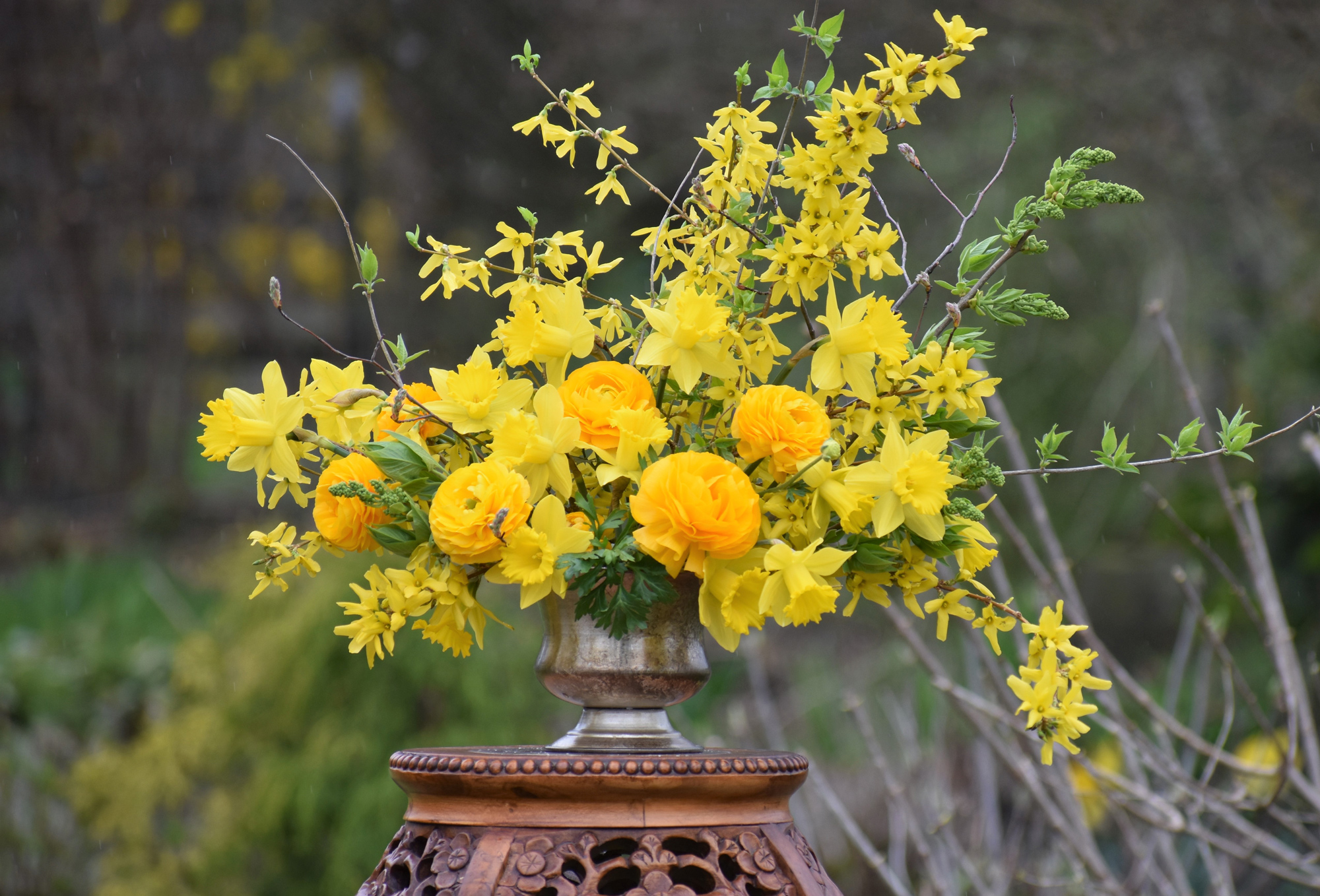
Freshly cut flowers need proper harvesting, handling, and conditioning in order to give us a long vase life. It may sound romantic to go out mid-day with the sun on your face, a wicker basket in tow, and rusty old snips in hand. But these practices will only result in stressed out flowers that are unable to properly hydrate themselves.
With the following tips, you can be harvesting and conditioning freshly cut blooms like a pro. Your hard work will be rewarded with bouquets that look great and go the distance.
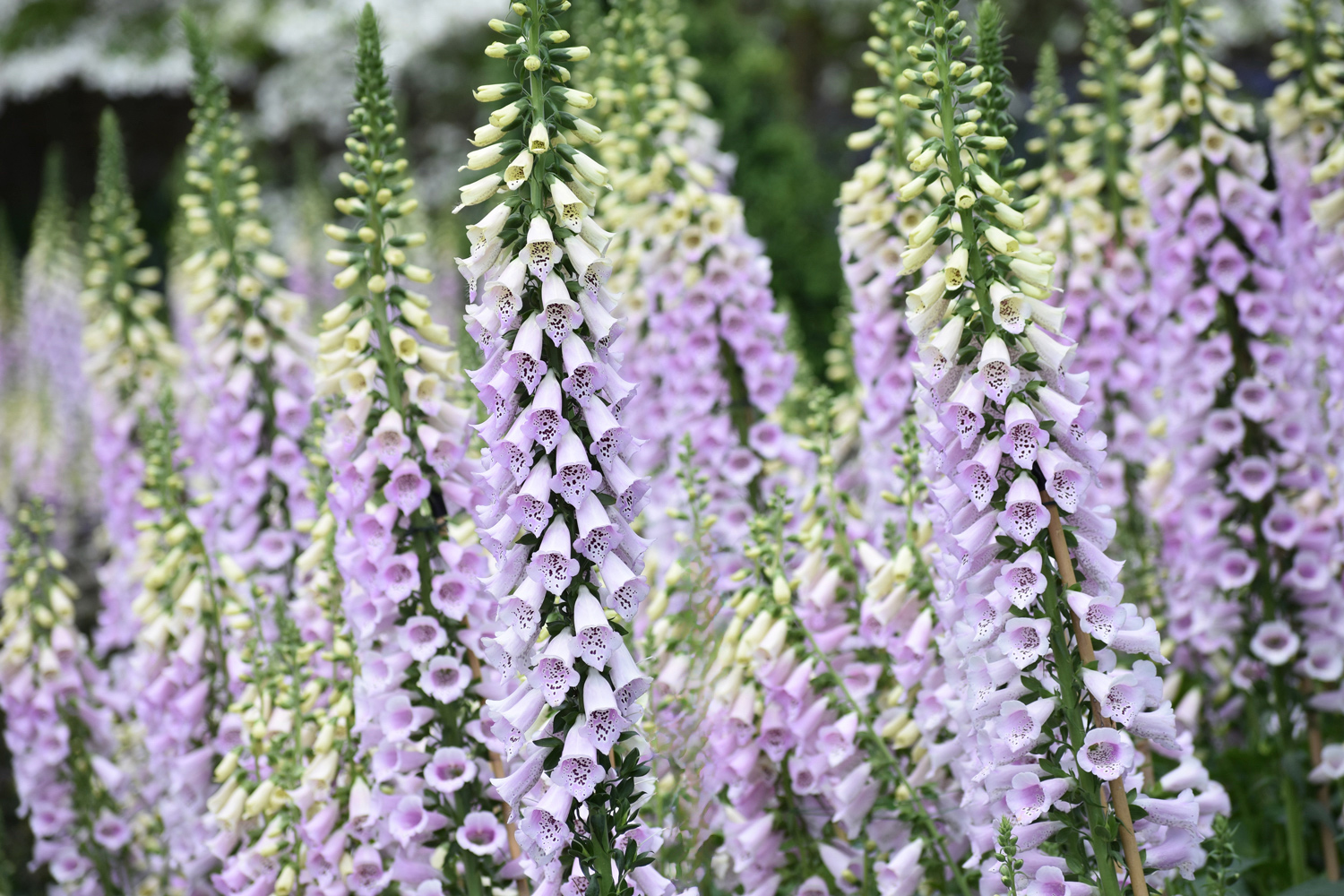
Cut Only When Flowers are Cool and Fully Hydrated
Flowers cut in the early morning or late evening don’t have to contend with the harsh heat stress of the day, and will always last longer in the vase. Be sure to bring your harvest bucket (filled with water) along with you so the flowers are never without water.
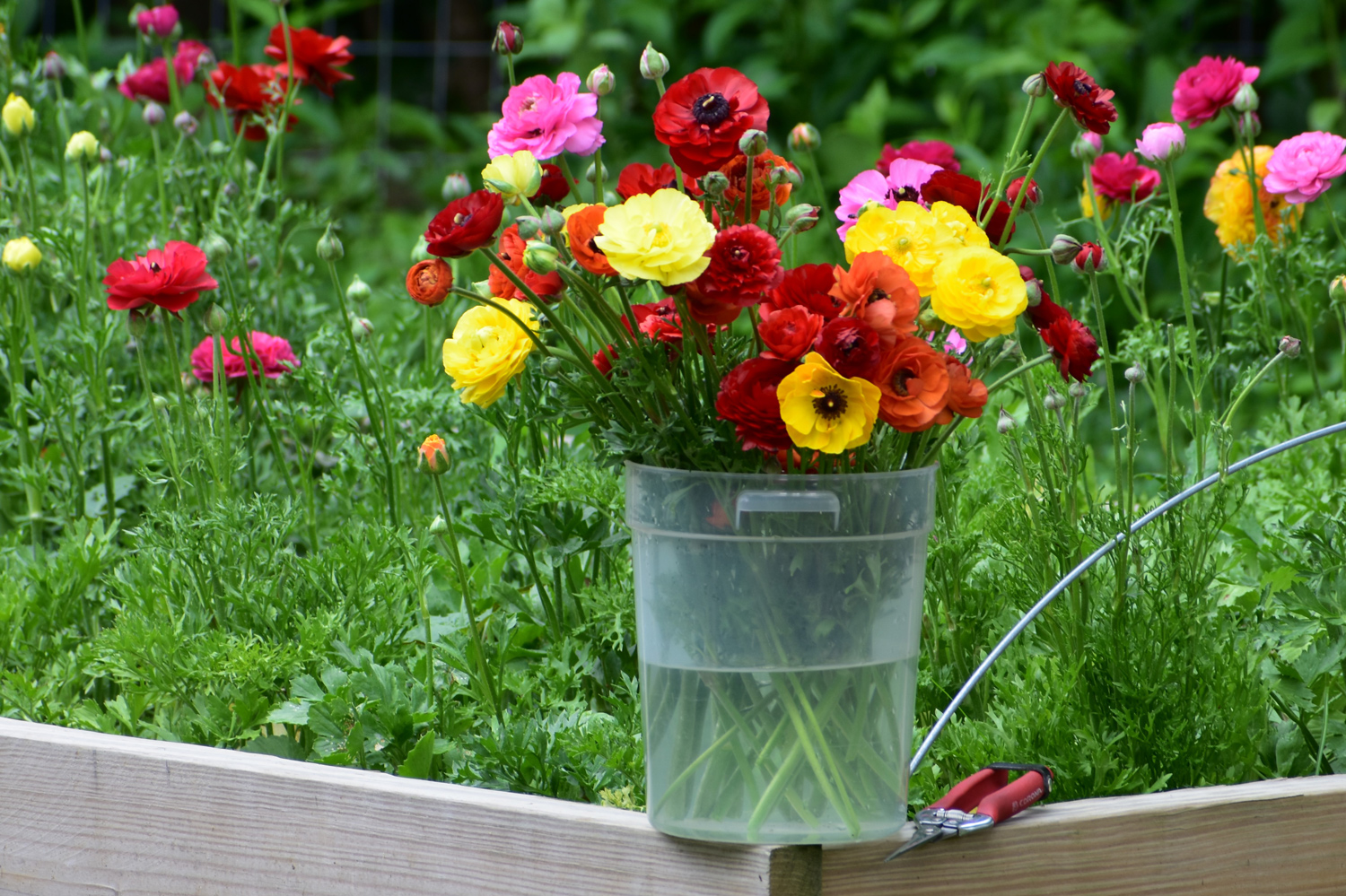
Always Use Clean Tools and Clean Buckets
Bacteria is the enemy because it clogs the stems and makes it harder for your flowers to absorb water. Always harvest flowers with clean snips and put stems into buckets that have been well scrubbed. Flower farmers say you should be able to take a drink from your harvesting bucket and cut a steak with your snips. If you’re not willing to eat and drink from these tools then they’re not clean enough. Take care to keep your tools sharp. Crushing or tearing the stems will restrict water uptake and give bacteria more points of entry.
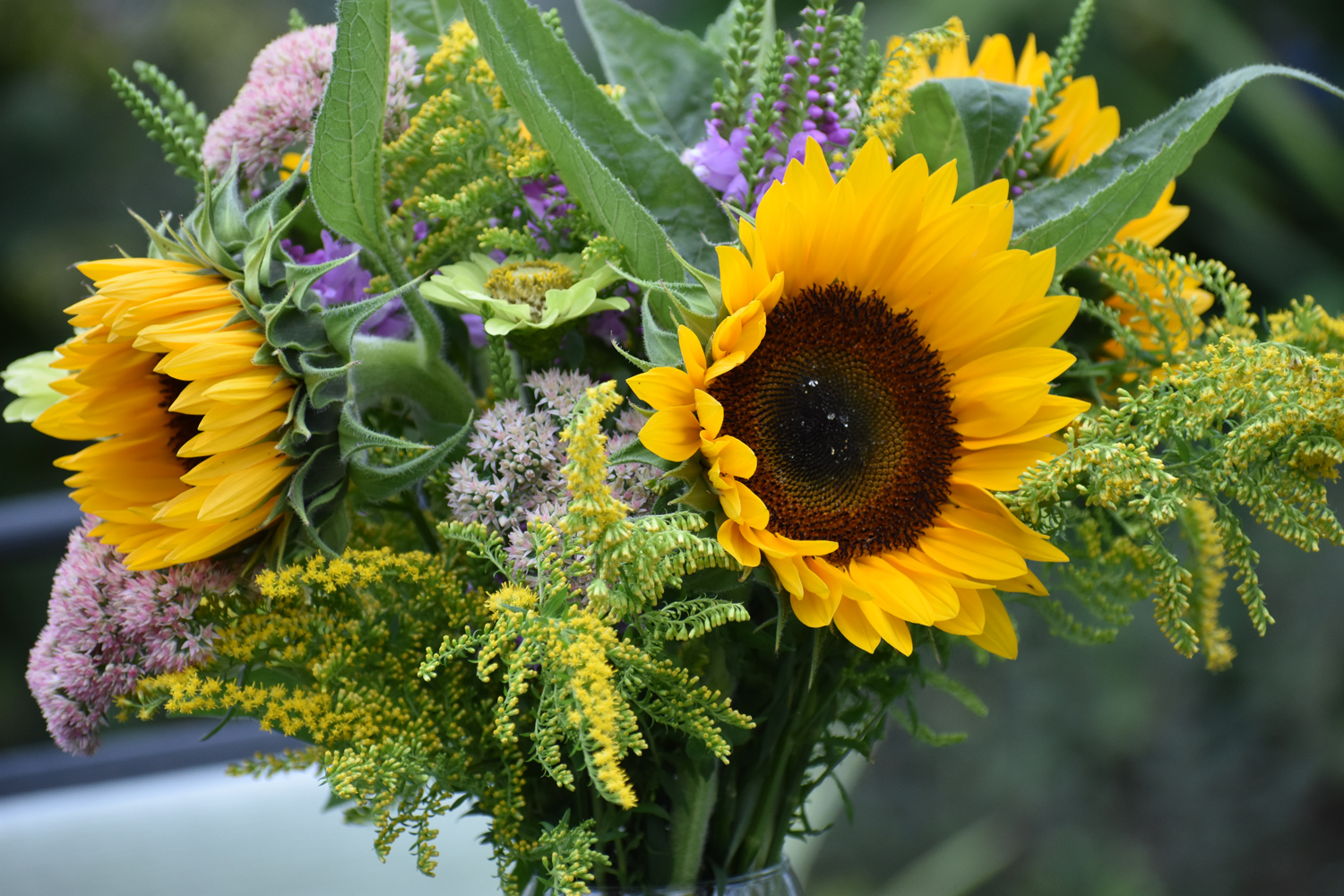
Know the Proper Harvest Stage
Flowers have different requirements as to the best stage for harvest. While a zinnia shouldn’t be picked until it has a stiff neck and is fully opened, a sunflower should be picked just as the petals are lifting from the center. A hydrangea should not be picked until it is fully colored and mature, while a snapdragon should be picked when only a few florets on the stem are open.
This degree of specificity may be intimidating, but as you start to learn each flower’s particular needs, you’ll find that it’s a fun and rewarding endeavor. If you grow annual flowers, you can search the Johnny’s Selected Seeds website and find the exact harvest stage for all their annual flower seeds. Just search for the flower in question and scroll down to the “growing information” tab. Plant specific harvesting instructions may also be found HERE.
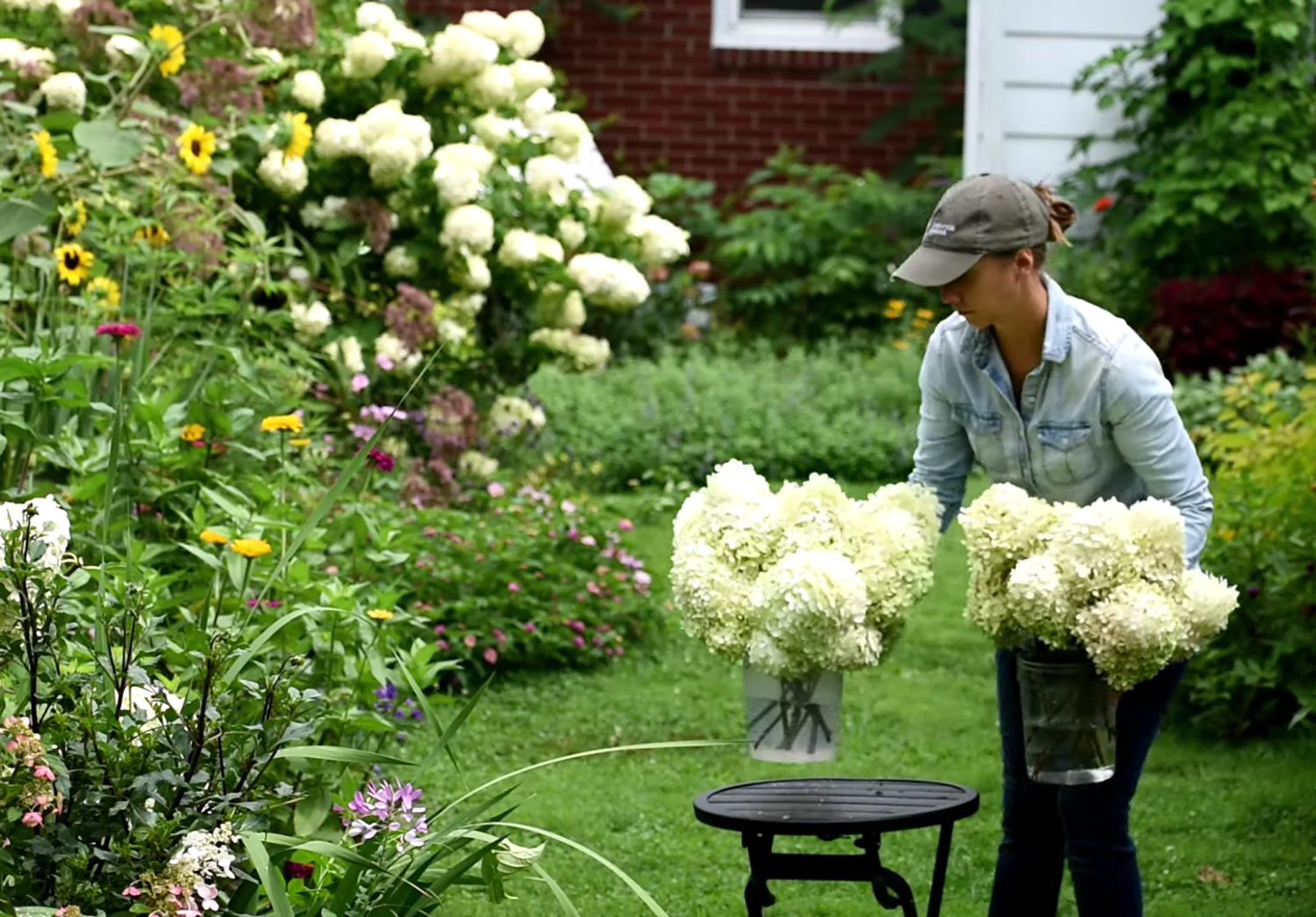
For perennials, bulbs, and woodies, you can do an internet search using the plant name and the words harvest/production/fact sheet/edu. Many universities have produced information sheets for growers. For example, a quick search on the University of Maryland website with the words UMD Lily Production will take you right to the UMD Lily Fact Sheet. If you’re interested in purchasing a book on cut flower harvesting, invest in “The Flower Farmer” by Lynn Byczynski. For a more in-depth encyclopedia on cut flower production check out “Specialty Cut Flowers” by Alan M. Armitage and Judy M. Laushman.
When it comes to foliage, the age of what you are cutting is key. The more mature the foliage, the less chance of it flopping in the vase. So look for darker colored, older, more leathery stems and always make a vertical cut up any woody stem to help it drink water.
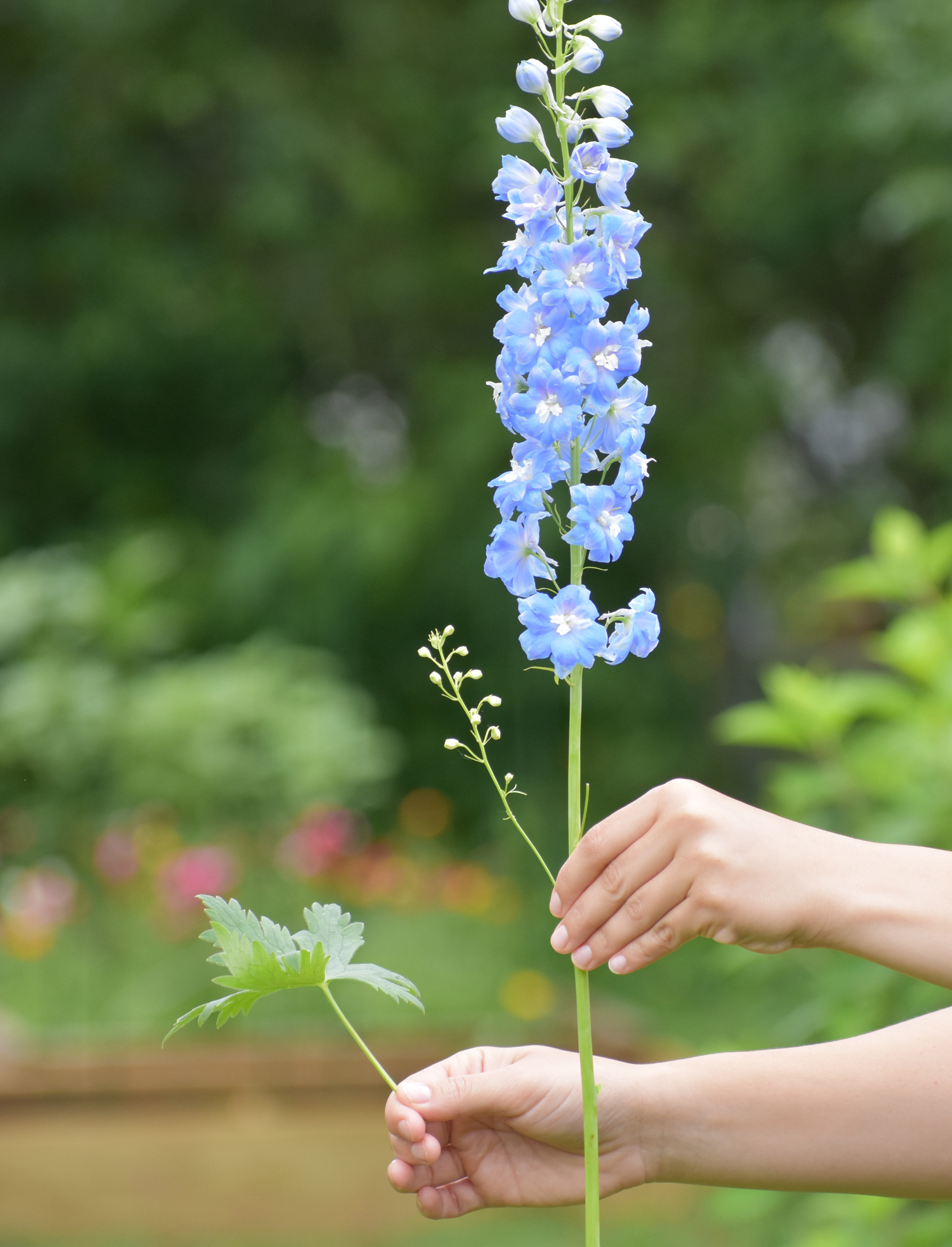
Remove All Leaves That Fall Below the Water Line
As leaves break down, they introduce bacteria into the water and this is always what you're trying to avoid. It's best to strip off all the leaves as you are harvesting and before the stems go in the harvest bucket.
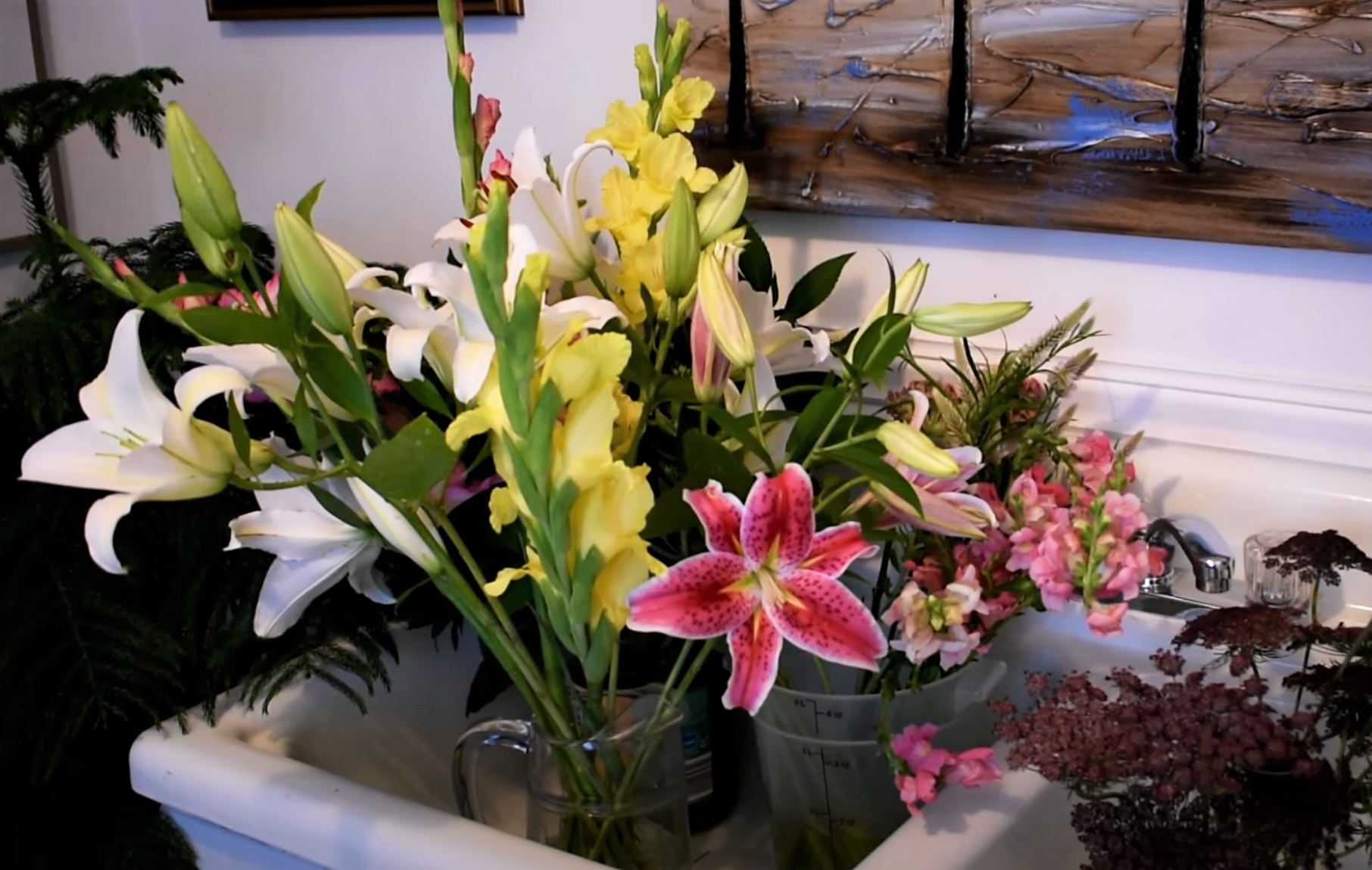
Cut the Stems at an Angle
This makes it less likely for the stems to get clogged as they are not sitting flush on the bottom of the vase. Cutting stems at an angle also creates more surface area and increases water uptake.
Condition the Flowers
Florists and flower farmers agree on the importance of conditioning freshly-cut flowers. Before you start arranging, give your flowers some time to rest in a cool location so they can rehydrate and recuperate. Giving the stems a long soak in a deep bucket of clean water will work wonders for the vase life of your blooms. For best results, condition your flowers overnight. If that's not possible, condition them for at least 4 hours.
If you want to learn more about properly conditioning flowers, the Garden Club of Brookfield Connecticut has compiled detailed instructions for how to condition hundreds of different types of annuals, perennials, bulbs and woody plants. You'll find that list Re-Cut the Stems
When you’re ready to arrange the flowers in a vase, recut the stems. This will encourage the flowers to take another drink.
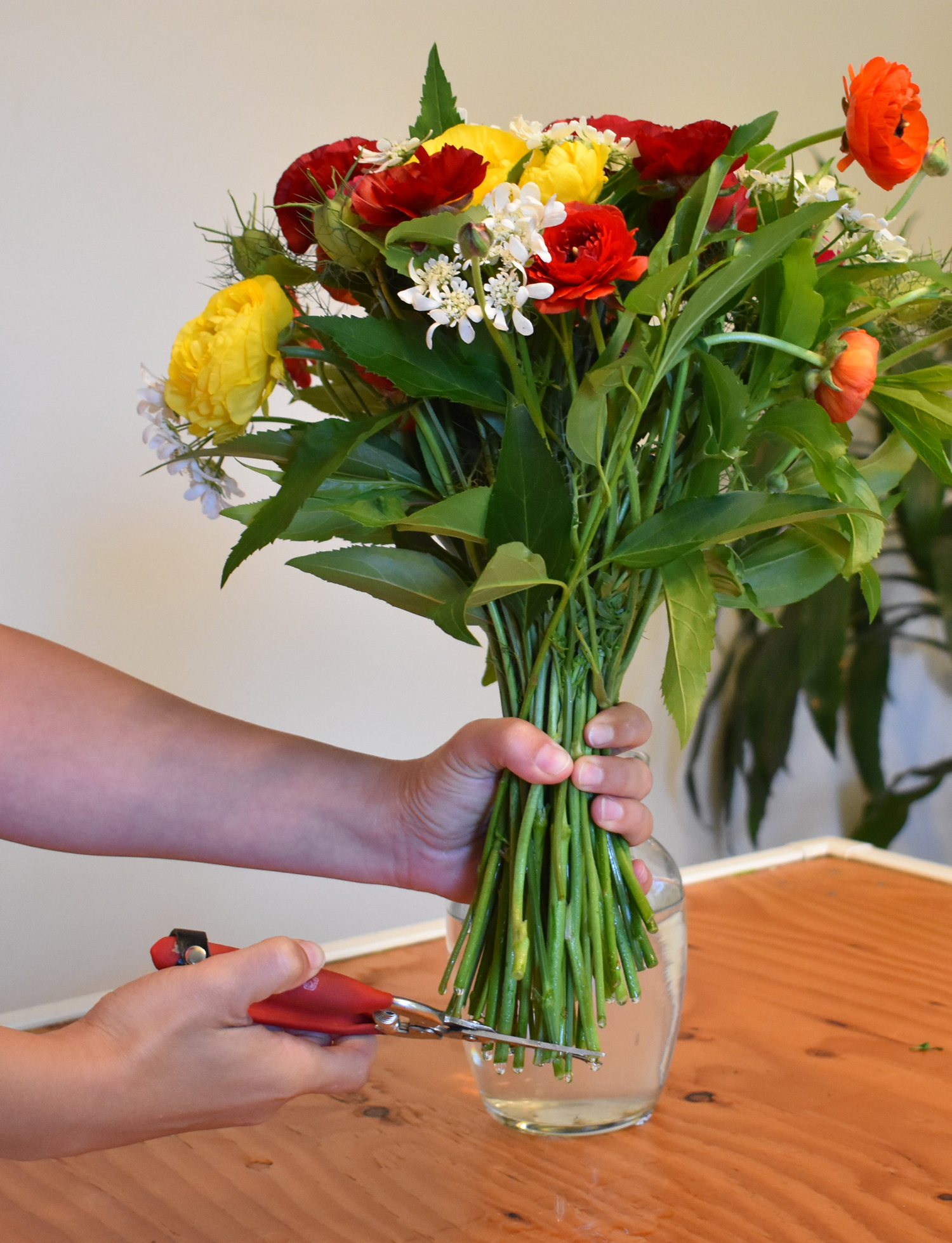
Add Flower Food to the Vase Water
Flower food provides some nourishment in the form of sugars. It also acidifies the water, which helps with water absorption. Most commercial flower foods also include a biocide to fend off bacteria. Adding flower food will extend the vase life of almost every type of flower. If you purchase the packets in bulk, they are inexpensive and will last for years.
Keep Flowers Cool
Once arranged, keep your flowers in a cool location away from direct sunlight and heat sources. An arrangement placed on a radiator with the sun shining on it through a window will fade much faster than one kept in a cool place away from the sun’s rays.
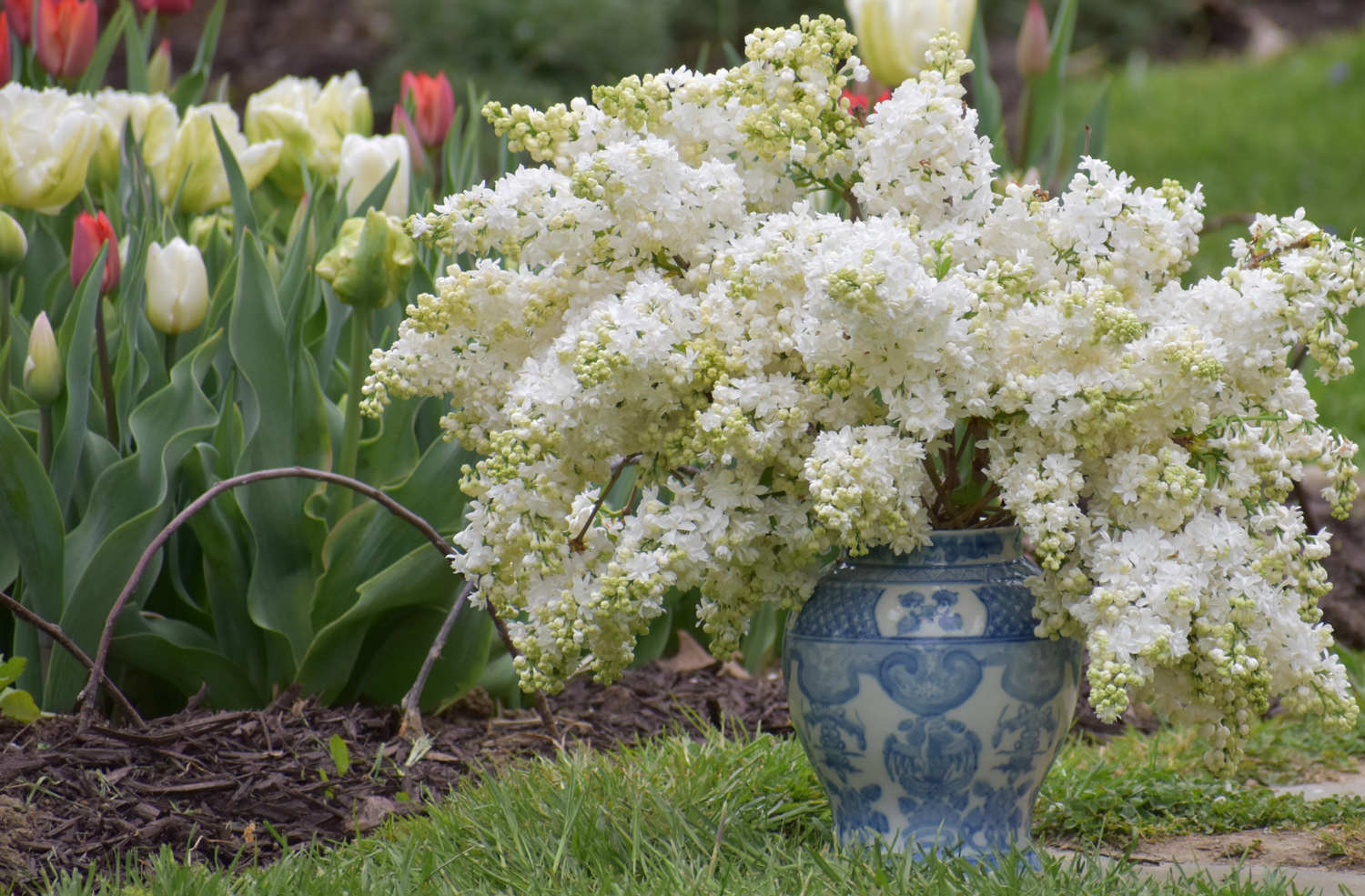
Change the Water to Keep it Clean
Refresh the water in your vase as often as necessary. The type of flowers you pick will determine how quickly the water becomes murky. Flowers, such as yarrow, chrysanthemums and zinnias are known to be “dirty” flowers. This means they contaminate vase water more quickly than others.
Strive to always have fresh, clear, clean water in the vase. For a simple bouquet of flowers with no mechanics, pour out all the water, recut the stems, wash the vase, and place the bouquet back into the clean vessel with fresh water. For more elaborate arrangements created in a floral frog or chicken wire, you can just top up the vessel with fresh water as needed. If possible, flush the vase every couple days. To do this, take the arrangement to the sink and allow running water to push the old water out while at the same time allowing the steady stream of water to add new clean water to the vase.
In mixed bouquets, some types of flowers always last longer than others. Remove fading blooms to keep your arrangement looking fresh. As the arrangement shrinks in size, you can transfer it to a smaller vase.
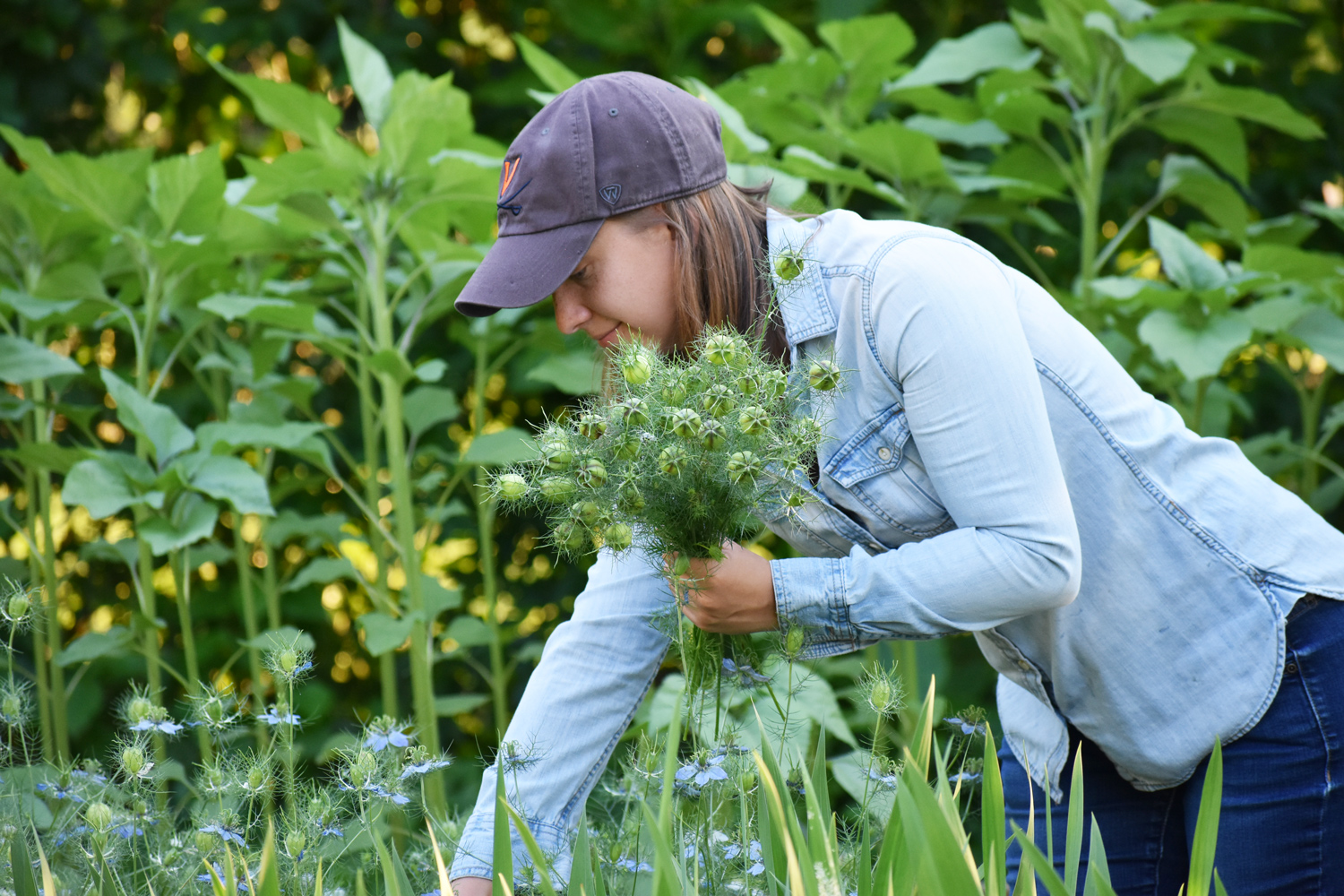
Pick Often and Enjoy the Process
Now that you have all the necessary tips to create a long lasting fresh cut flower bouquet, it’s time to head out into the garden and pick something beautiful. Take a minute to enjoy the peace and pleasure that comes with harvesting flowers from your own garden. The stillness in the morning, the bird song in the distance, the crunch of gravel underfoot and the…wait…what was that…a bee buzzing? If so, it’s time to stop harvesting! Wait for the beauty of the setting sun at dusk and then head back to your little piece of Eden with clean snips and a freshly scrubbed bucket in hand. Your flowers will thank you for it.
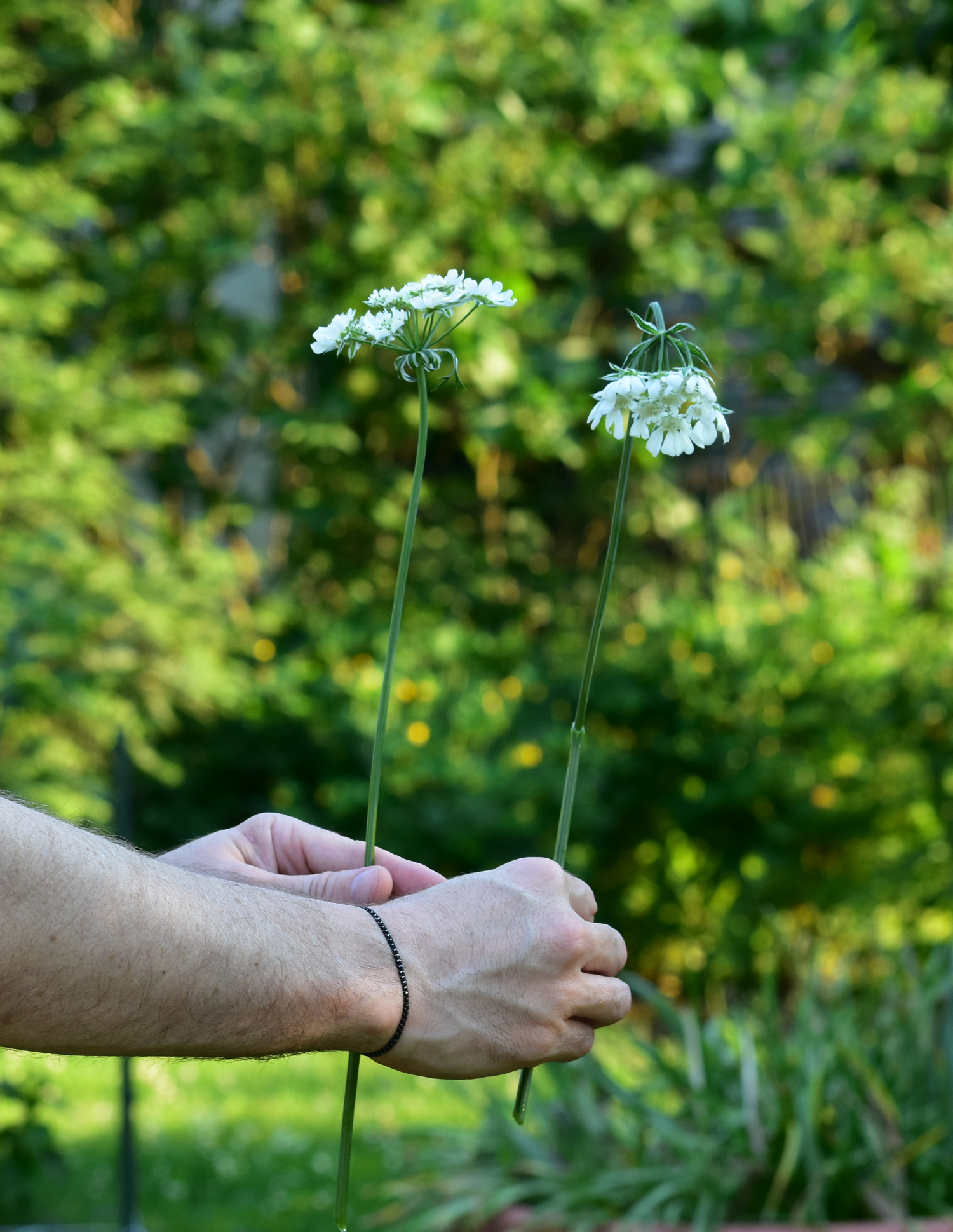
Bonus Tip!
Even if you do everything right, some flowers are just wimpy drinkers. These hard to hydrate blooms include lilac, Orlaya, Dara, poppy, scented geranium, hellebore, and lambada. For them, consider using a hydration product called Quick Dip. This opens the capillaries in the stem and encourages the flow of water up to the bloom head. Here’s a short video on how to use that product.
